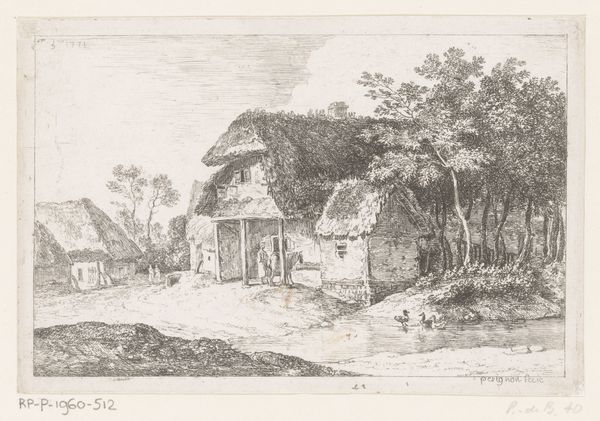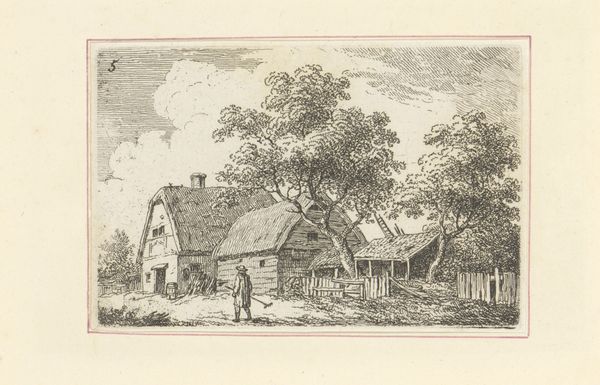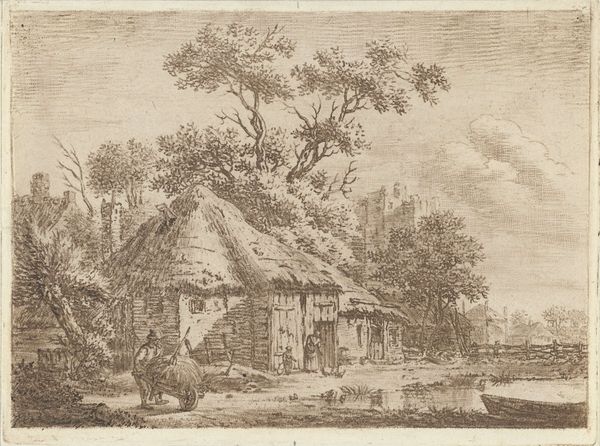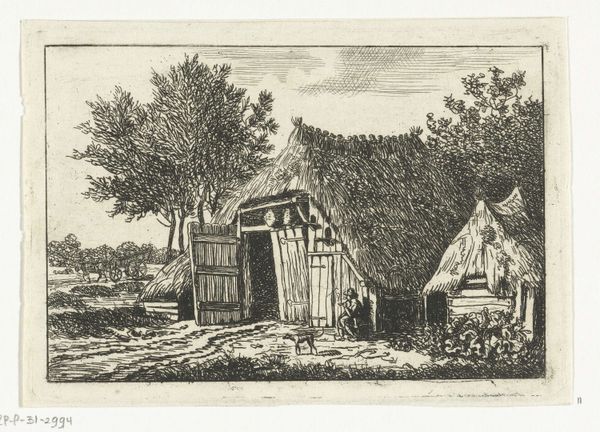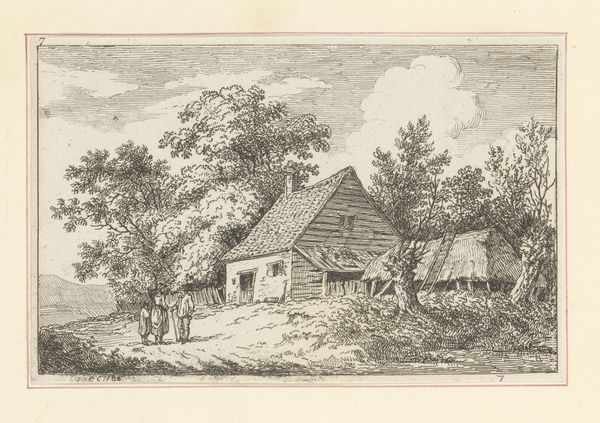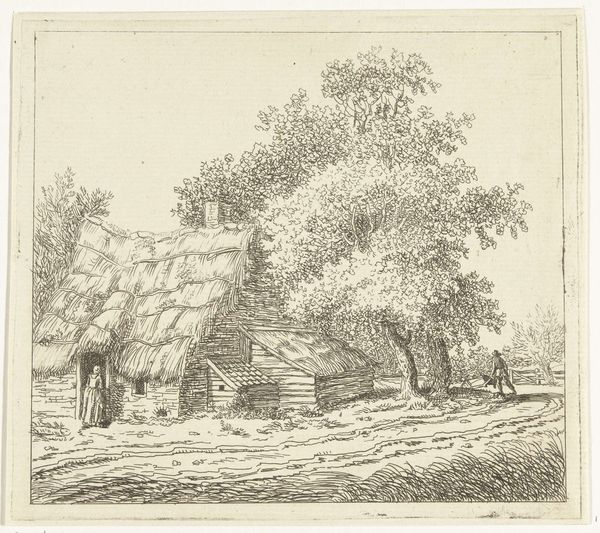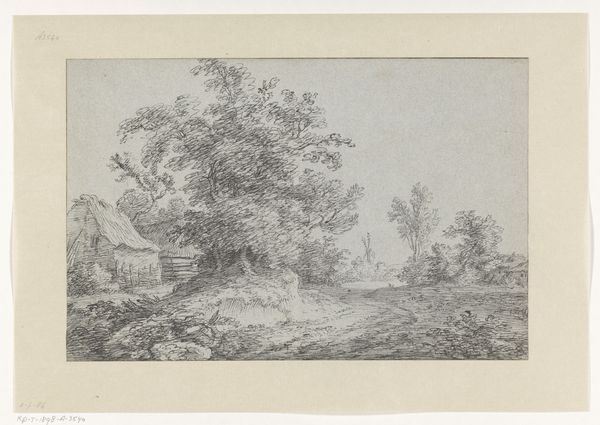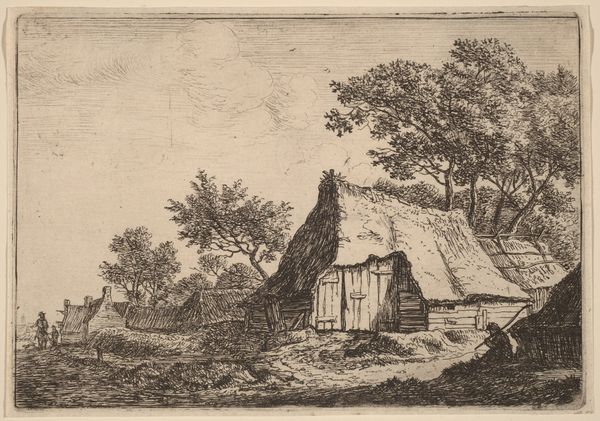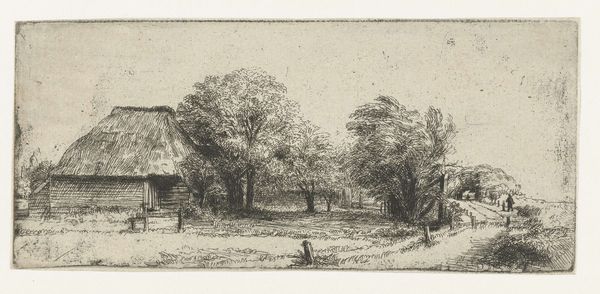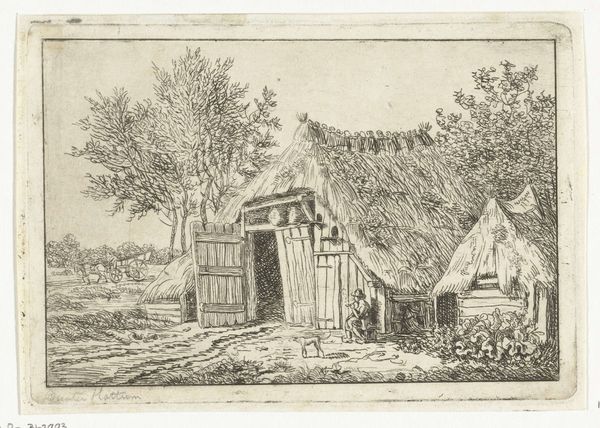
print, etching
# print
#
etching
#
landscape
#
realism
Dimensions: height 169 mm, width 228 mm
Copyright: Rijks Museum: Open Domain
Editor: This etching, "Een watermolen," or "A Watermill," was created by Johannes Arnoldus Boland around 1875. There's something so calm about the scene – the water gently falling, the quiet presence of the mill nestled amongst the trees. What do you see in this piece? Curator: It’s fascinating how Boland captures the essence of a bygone era through potent symbols. The watermill itself, what does it represent to you? Isn’t it the cycle of nature, industry, community all intertwined? It shows humankind harnessing nature’s power. The mill evokes notions of labor, tradition, and sustenance. But look closer, do you observe that nature embraces and almost conceals it? What do you feel from the distribution of shade in the etching? Editor: Yes, I notice how the dark shades envelop the watermill! The trees surrounding the watermill suggests a symbiotic, but almost ominous, relationship. Curator: Exactly! Consider the psychology of landscape art, how natural scenes frequently mirror our inner emotional landscapes. The trees, both sheltering and looming, they evoke emotions tied to our relationship with the natural world - safety, respect, vulnerability, and perhaps a tinge of isolation. How has the symbolic power of landscapes evolved over time? Editor: That makes a lot of sense. Early landscape art seemed more about celebrating nature, whereas this feels more introspective. It’s fascinating how something as simple as a watermill can carry so much cultural weight. Curator: And isn’t that the true enchantment of art, to see our past, our values, our anxieties mirrored back at us through skillful strokes and symbolic landscapes?
Comments
No comments
Be the first to comment and join the conversation on the ultimate creative platform.
